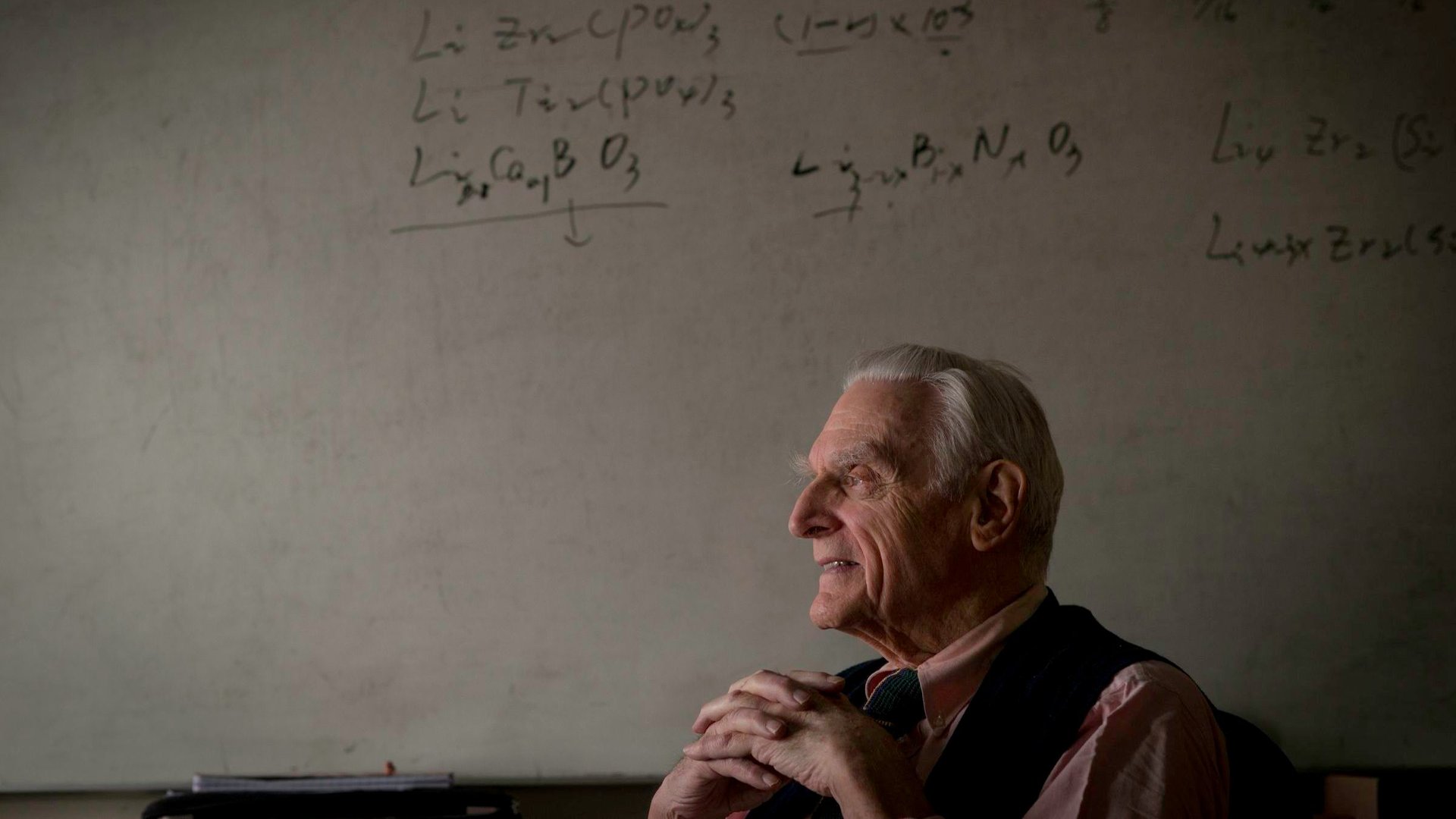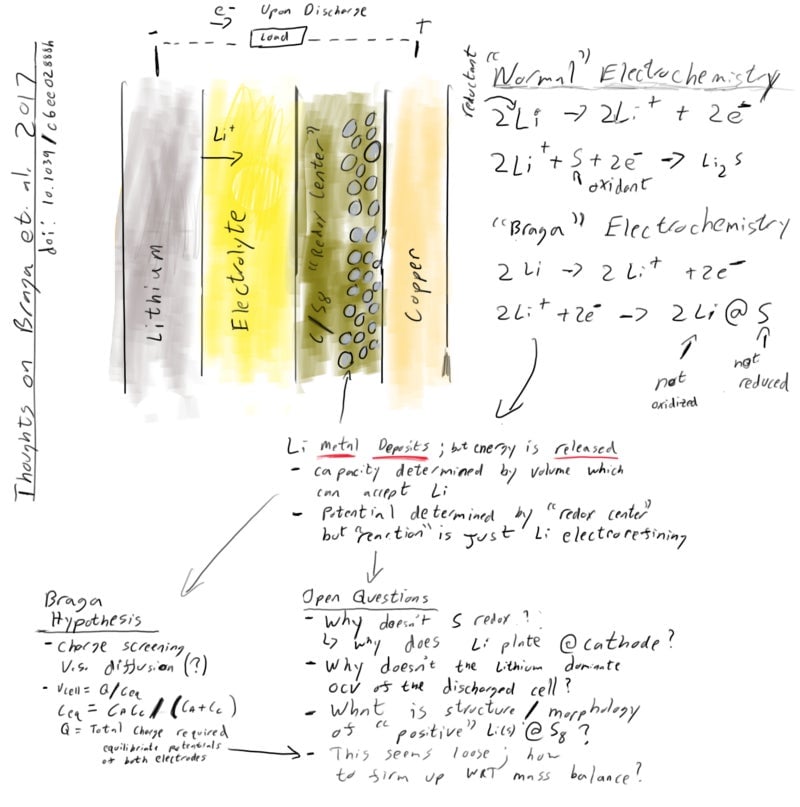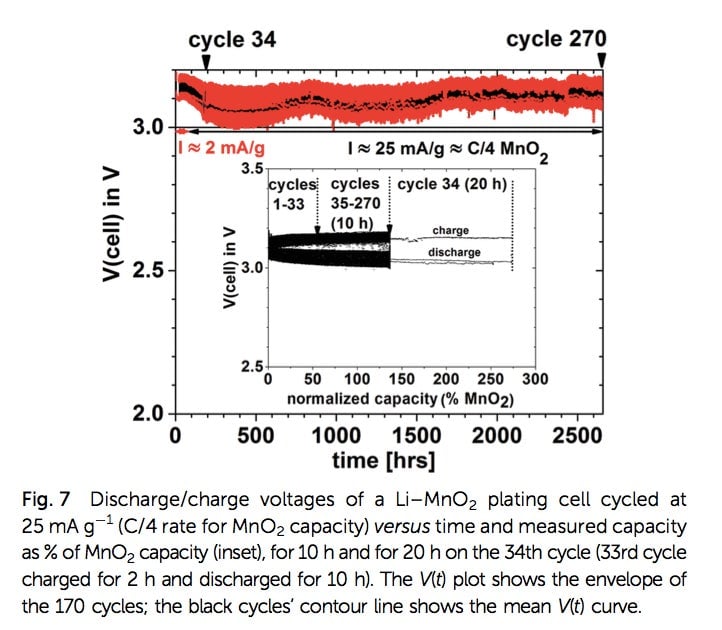Has lithium-battery genius John Goodenough done it again? Colleagues are skeptical
Researchers have struggled for decades to safely use powerful—but flammable—lithium metal in a battery. Now John Goodenough, the 94-year-old father of the lithium-ion battery, is claiming a novel solution as a blockbuster advance.


Researchers have struggled for decades to safely use powerful—but flammable—lithium metal in a battery. Now John Goodenough, the 94-year-old father of the lithium-ion battery, is claiming a novel solution as a blockbuster advance.
If it proves out, the invention could allow electric cars to compete with conventional vehicles on sticker price. The improbable solution, described in a new paper from Goodenough and three co-authors, has drawn intense interest from leading science and technology publications. He estimates that the solution could store five to ten times as much energy as current standard lithium-ion batteries. That’s enough to have Google’s Eric Schmidt tweeting about it.
However, other leading battery researchers are skeptical, even mystified, by Goodenough’s claim. For his invention to work as described, they say, it would probably have to abandon the laws of thermodynamics, which say perpetual motion is not possible. The law has been a fundamental of batteries for more than a century and a half.
Goodenough’s long career has defined the modern battery industry. Researchers assume that his measurements are exact. But no one outside of Goodenough’s own group appears to understand his new concept. The battery community is loath to openly challenge the paper, but some come close. “If anyone but Goodenough published this, I would be, well, it’s hard to find a polite word,” Daniel Steingart, a professor at Princeton, told Quartz.
Goodenough did not respond to emails. But in a statement released by the University of Texas, where he holds an engineering chair, he said, “We believe our discovery solves many of the problems that are inherent in today’s batteries. Cost, safety, energy density, rates of charge and discharge and cycle life are critical for battery-driven cars to be more widely adopted.” In addition, Helena Braga, the paper’s lead author, in an exchange of emails, insisted that the team’s claims are valid.
Goodenough towers over the battery world
For almost four decades, Goodenough has dominated the world of advanced batteries. If anyone could finally make the breakthrough that allows for cheap, stored electricity in cars and on the grid, it would figure to be him. Goodenough invented the heart of the battery that is all but certainly powering the device on which you are reading this. It’s the lithium-cobalt-oxide cathode, invented in 1980 and introduced for sale by Sony in 1991. Again and again, Goodenough’s lab has emerged with dramatic discoveries confirming his genius.
Still, batteries remain wanting. Inferior battery technology is perhaps the biggest impediment to mainstream electric-car manufacturing. Batteries cost too much, take too long to charge, and don’t transport drivers far enough.
Hence the excitement over the new paper by Goodenough and his team published in Energy and Environmental Science. A Feb. 28 release from the University of Texas reported they had figured out how to incorporate an electrode—an anode—made of pure lithium or sodium metal, which because of their potential energy has been a top goal for decades. A key is the use of glass as the electrolyte, the substance that connects a battery’s two electrodes and facilitates the shuttling of ions to create electricity.
Goodenough reported that his new battery cell had achieved a 10-fold improvement in energy density—the amount of energy stored—in one case, and a three-fold improvement in another. In one experiment, Goodenough estimates a 30-fold improvement on the best density in a lithium-ion battery today—8,500 watt-hours per kilogram. Moreover, this was accomplished not using exotic materials, but cheap sodium and sulfur. That means, unlike many other reported battery breakthroughs, this one could actually be used in mainstream-priced cars.
Still, the paper has baffled battery researchers
It’s what is not stated in the paper that has some of the battery community stumped. How is Goodenough’s new invention storing any energy at all? The known rules of physics state that, to derive energy, differing material must produce differing eletro-chemical reactions in the two opposing electrodes. That difference produces voltage, allowing energy to be stored.
But Goodenough’s battery has pure metallic lithium or sodium on both sides. Therefore, the voltage should be zero, with no energy produced, battery researchers told Quartz.
Goodenough reports energy densities multiple times that of current lithium-ion batteries. Where does the energy come from, if not the electrode reactions? That goes unexplained in the paper.
The unstated physics would lead to creation of a battery that, once charged, requires no further energy in order to keep pushing out electricity—violating the laws of thermodynamics. “He’s technically made a perpetual motion machine,” said Venkat Viswanathan, a professor at Carnegie Mellon University in Pittsburgh, Pennsylvania.
“It’s kind of like cold fusion. Here is an experiment that is unbelievable,” said Dalhousie University’s Jeff Dahn, a leading researcher whose Canadian laboratory is on a contract with Tesla. “There could be a small possibility that it is right.”
Steingart, the Princeton professor, has published a long essay about the paper at Medium (see his notes below). He is among researchers calling Goodenough’s stealth energy “anomalous capacity.” Both he and Dahn wondered whether oxygen had leaked into the cell, making it an inadvertent “lithium air” battery that would explain the burst of energy. Lithium air is a second Holy Grail of battery researchers, even more elusive than the metallic lithium anode; no one has ever made one that lasted more than a few cycles.

Braga, the lead author on the paper, rejects the lithium-air explanation, insisting that the concept is solid: “Well if we have a Lithium-air battery then we have a very good Lithium-air battery,” she said, noting that the experiment ran for hundreds of cycles, far longer than any rechargeable lithium-ion battery. Here is the diagram to which Braga is referring:

The history of battery advances—and Goodenough’s history in particular—has been filled with surprises. In at least two cases—the development of the pivotal manganese oxide cathode and of the iron phosphate cathode—Goodenough initially disbelieved his post-docs when they suggested the theses, only to be proven wrong.
In an email exchange, Steingart said, “There’s not a question in my mind that Goodenough and company measured what they say they measured based on what they thought was in the cell. The question is why did the system behave the way it did, and the explanation as to why raises many questions.”